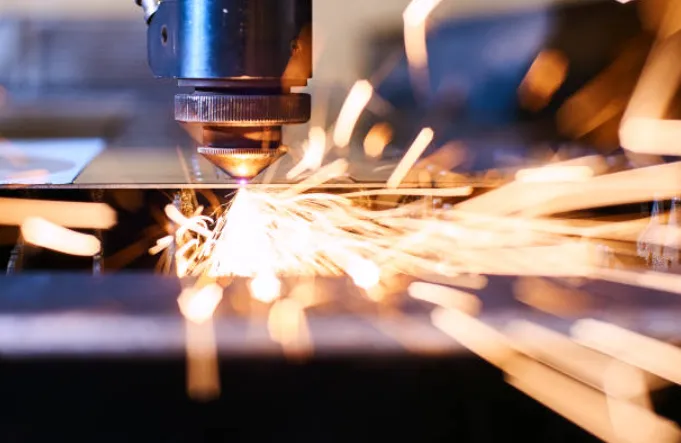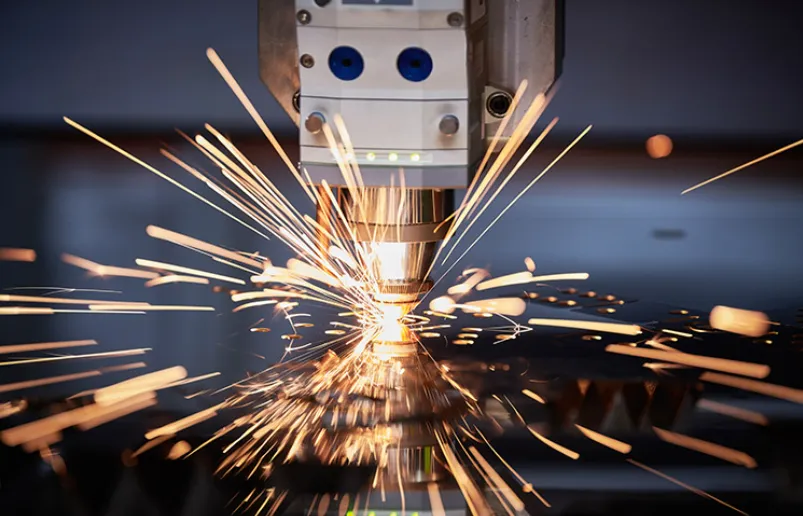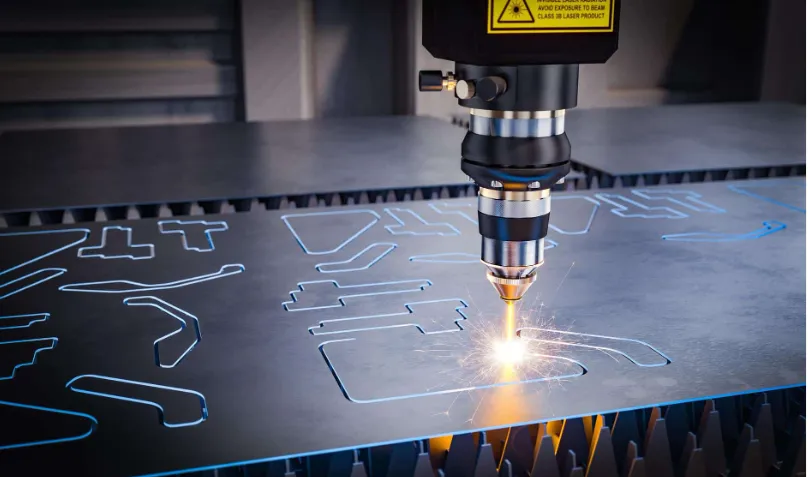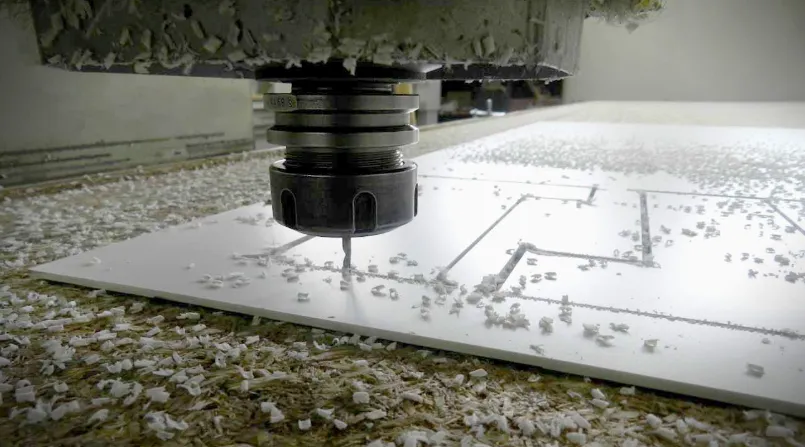CNC cutting represents a fundamental pillar of modern manufacturing, leveraging computer numerical control technology to transform raw materials into precisely shaped components with exceptional accuracy and repeatability. This subtractive manufacturing process utilizes programmable machine tools to guide cutting implements through carefully calculated paths, removing material with controlled precision to achieve desired geometries across metals, plastics, composites, and engineered materials. The foundation of CNC cutting lies in its digital workflow, where CAD (computer-aided design) models are translated into machine instructions through CAM (computer-aided manufacturing) software, generating G-code that dictates every movement of the cutting tool with micron-level specificity. Various cutting methodologies have emerged to address different material requirements and production scenarios, including laser cutting which employs focused light beams for clean, heat-affected edges in sheet metal; plasma cutting that utilizes superheated ionized gas for rapid sectioning of conductive materials; waterjet cutting harnessing high-pressure abrasive streams for cold-cutting applications where thermal distortion must be avoided; and traditional mechanical cutting using rotating end mills or drills for volumetric material removal. Each technique presents unique advantages in terms of cut quality, material compatibility, thickness capacity, and production speed, with modern manufacturing facilities often maintaining multiple CNC cutting systems to cover diverse application needs.
 The mechanical architecture of CNC cutting systems varies significantly based on their operational principles but shares common precision engineering characteristics. Gantry-style configurations dominate large-format cutting applications, providing stable platforms for moving cutting heads across expansive work envelopes that may exceed 10 meters in industrial settings. These machines incorporate high-performance linear motion systems using ground ball screws or linear motors paired with optical encoders that achieve positioning accuracies within ±0.02mm under production conditions. Cutting heads mount specialized tooling or energy sources appropriate to the process – whether focusing lenses for laser systems, torches for plasma applications, or nozzles for waterjet cutters – with automatic height control systems maintaining optimal working distances as material surfaces vary. Workholding solutions range from vacuum tables that secure sheet goods without mechanical obstruction to specialized fixtures that locate and clamp pre-formed parts for secondary machining operations. Advanced CNC cutting systems integrate real-time monitoring technologies including thermal sensors for laser processes, arc voltage controls for plasma systems, and pressure transducers for waterjet operations, all feeding data back to the machine control for dynamic process adjustment.
The mechanical architecture of CNC cutting systems varies significantly based on their operational principles but shares common precision engineering characteristics. Gantry-style configurations dominate large-format cutting applications, providing stable platforms for moving cutting heads across expansive work envelopes that may exceed 10 meters in industrial settings. These machines incorporate high-performance linear motion systems using ground ball screws or linear motors paired with optical encoders that achieve positioning accuracies within ±0.02mm under production conditions. Cutting heads mount specialized tooling or energy sources appropriate to the process – whether focusing lenses for laser systems, torches for plasma applications, or nozzles for waterjet cutters – with automatic height control systems maintaining optimal working distances as material surfaces vary. Workholding solutions range from vacuum tables that secure sheet goods without mechanical obstruction to specialized fixtures that locate and clamp pre-formed parts for secondary machining operations. Advanced CNC cutting systems integrate real-time monitoring technologies including thermal sensors for laser processes, arc voltage controls for plasma systems, and pressure transducers for waterjet operations, all feeding data back to the machine control for dynamic process adjustment.

Material considerations profoundly influence CNC cutting parameters and technique selection. Metals ranging from thin-gauge aluminum foils to 150mm-thick steel plates each demand specific cutting approaches – with laser systems excelling in precision sheet metal work below 25mm, plasma cutting handling heavier sections economically, and waterjet providing universal capability across thicknesses with slower cutting speeds. Non-metallic materials like acrylic, wood composites, and rubber require modified cutting strategies, often utilizing different laser wavelengths (CO2 lasers for organics), reduced waterjet pressures, or specialized mechanical cutters. The growing use of advanced materials including carbon fiber reinforced polymers (CFRP), titanium alloys, and ceramic-matrix composites has driven development of hybrid cutting solutions that combine multiple technologies to achieve clean edges without delamination or heat-affected zone (HAZ) damage. Cutting parameter optimization involves careful balancing of speed, power, assist gases, and feed rates to maximize edge quality while maintaining productivity – a process increasingly assisted by AI-driven parameter databases that recommend settings based on material specifications and desired cut characteristics.

Software ecosystems form the intellectual core of CNC cutting operations, transforming design intent into physical reality. Modern CAM systems for cutting applications feature sophisticated nesting algorithms that maximize material utilization by arranging parts to minimize scrap – particularly valuable when processing expensive metals or composites. Simulation modules verify toolpath validity before machine execution, detecting potential collisions and predicting thermal effects in laser processes. Advanced software packages incorporate machine learning capabilities that analyze historical cutting data to continuously refine process parameters, improving cut quality and extending consumable life. Post-processors translate generic toolpaths into machine-specific code while accounting for unique kinematic behaviors of each cutting system. The rise of Industrial Internet of Things (IIoT) platforms enables centralized monitoring of multiple CNC cutting systems, collecting performance metrics that inform predictive maintenance schedules and production planning. Digital twin technology creates virtual representations of physical cutting processes, allowing engineers to test and optimize operations without interrupting production.

Industrial applications of CNC cutting span virtually every manufacturing sector, each with specialized requirements driving technological innovation. Automotive manufacturers employ high-speed laser cutting systems for producing structural components and body panels with complex contours, while the aerospace industry relies on precision waterjet cutting for machining turbine blades and aircraft skin panels from exotic alloys. Electronics manufacturers utilize ultra-fine laser cutting to process flexible circuits and semiconductor components, where feature sizes may measure mere microns. The construction sector applies plasma cutting systems for fabricating structural steel elements with the strength-to-weight ratios required for modern architecture. Even creative industries harness CNC cutting technologies – from sign-making with intricate vinyl patterns to artistic metalwork featuring elaborate pierced designs. This remarkable range of applications demonstrates CNC cutting’s versatility as a manufacturing solution capable of transitioning seamlessly between mass production and customized one-off fabrication.

Emerging trends in CNC cutting technology continue to expand process capabilities and application boundaries. Fiber laser technology has revolutionized metal cutting with its superior energy efficiency and beam quality compared to traditional CO2 lasers, enabling faster processing of reflective metals like copper and brass. Intelligent cutting heads now incorporate vision systems that automatically adjust focal positions and track seam locations for welding preparation. The integration of additive manufacturing with CNC cutting systems creates hybrid machines capable of both building up and trimming down components in a single setup. Environmental considerations are driving development of greener cutting solutions – from waterjet systems that recycle abrasives to laser cutters with improved energy recovery systems. Automation advancements include robotic material handling systems that load raw stock and unload finished parts without human intervention, enabling lights-out manufacturing operations. As Industry 4.0 initiatives progress, CNC cutting systems are becoming increasingly connected nodes in smart factories, communicating with other machines and enterprise systems to optimize overall production flow. These continuous innovations ensure CNC cutting remains at the forefront of manufacturing technology, adapting to new materials and product requirements while maintaining its fundamental role as a precision material processing solution.




